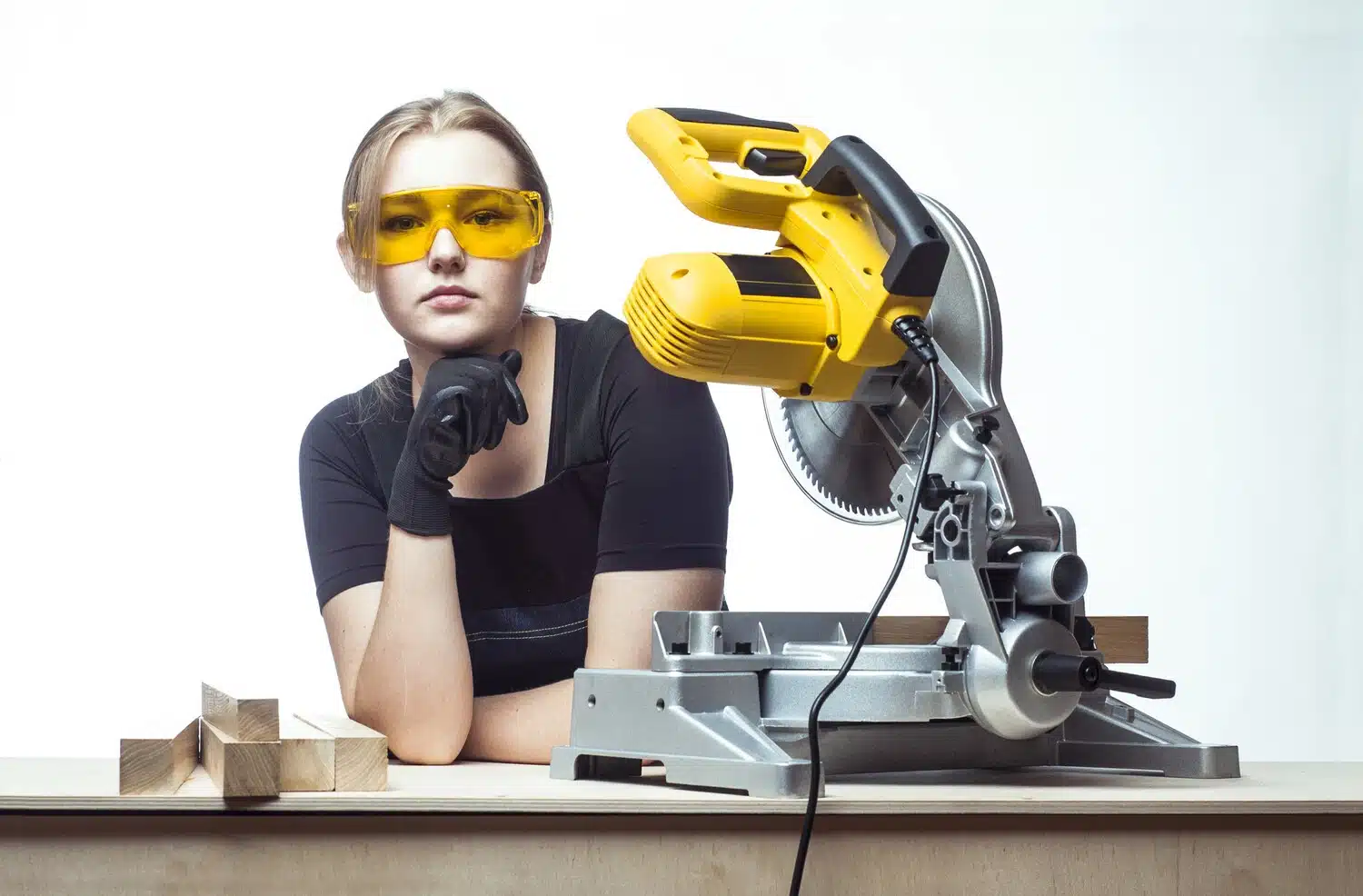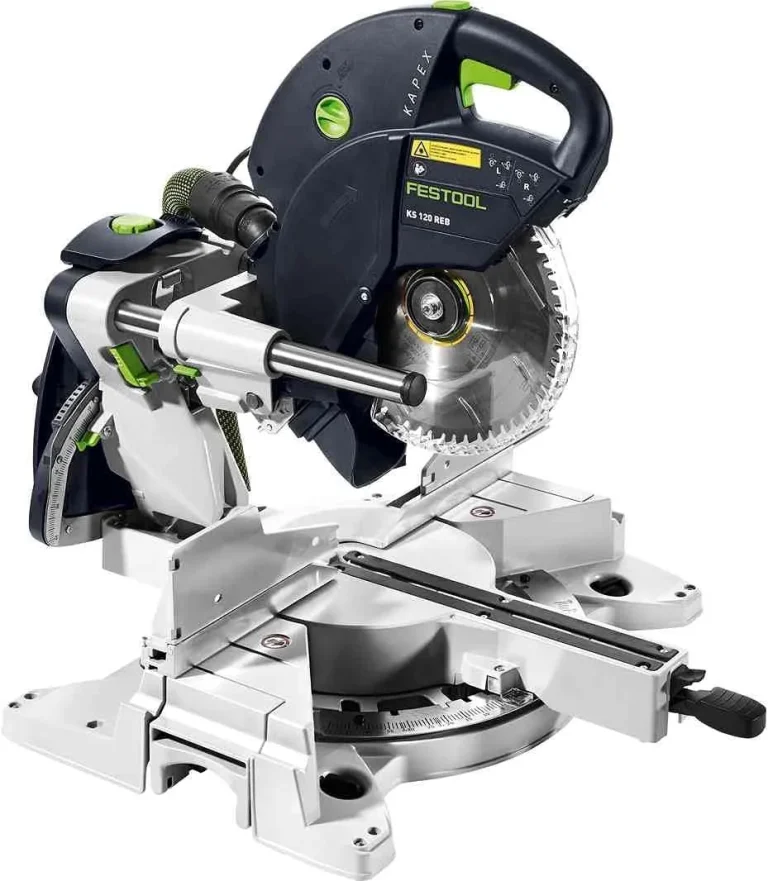Corded vs Cordless Miter Saw: Should You Cut the Cord?
When starting a woodworking project, picking the right tools is important. One key tool is the miter saw, which comes in two types: corded and cordless. In this article, we’ll look at what makes each type special, including their power, how easy they are to move around, how to take care of them, and how loud they are. Whether you’re setting up your workshop for the first time or thinking about getting a new tool, knowing about these saws will help you choose the best one for your projects.
Corded vs Cordless Miter Saws: Key Differences and Similarities
If you’re in the market for a miter saw, you’ve likely been scratching your head over whether to go corded or cut the cord completely. As someone who’s spent two decades amidst sawdust and lumber, I’m here to help you saw through the confusion. Let’s dive into the nitty-gritty, shall we?
Power Source
The heart of the matter lies in how these tools get their juice. Corded saws need a constant connection to power, making them the marathon runners of the woodworking world. They’re always ready for action, no pit stops needed. On the flip side, their cordless cousins run on batteries, offering the freedom to roam. No more tripping over cords or hunting for outlets. But remember, with great power (or lack thereof) comes great responsibility — keeping those batteries charged!
Size, Weight, and Portability
When it comes to size and weight, cordless saws often tip the scales on the lighter side, making them a breeze to carry around. Corded models, however, can be a bit more of a workout due to their robust build. But hey, who needs a gym membership when you’ve got a workshop, right?
Portability is another game-changer. A cordless miter saw is your best mate if you’re hopping from job to job. No cords mean no fuss. Just pack it up and you’re good to go. Corded saws, while a bit more stationary, often promise a steadier base for those precision cuts.
Precision, Project Type, and Environment
Now, let’s talk precision and the type of projects you’re eyeing. Both saw types can deliver top-notch accuracy, but the devil’s in the details. If your projects are more demanding or you’re working with tougher materials, a corded saw’s consistent power might be your ally.
Environment plays a big role too. If you’re a fan of the great outdoors or often find yourself away from power sources, a cordless saw will be your lifeline. Just imagine the possibilities of trimming and cutting, surrounded by nature, without a cord in sight!
Storage Solutions and Ease of Use
Lastly, let’s not forget about storage and ease of use. Cordless miter saws are somewhat of a minimalist’s dream. Easy to stow away without worrying about cord management, they’re perfect for keeping a sleek and tidy workspace. Corded saws, while a bit more high-maintenance in the storage department, often compensate with features and power that are hard to match.
Corded Miter Saw Features and Drawbacks
Let’s take a deep dive into the good and bad of the corded miter saw.
Consistent Power: The Unwavering Ally
First off, the cornerstone of corded miter saws is their uninterrupted power supply. Plug it in, and voilà, you’re equipped to tackle marathon projects without fretting over a dying battery. This continuous power ensures your saw doesn’t lose steam, especially during those heavy-duty cuts.
Precision and Power: A Cut Above
When it comes to precision, corded saws are often seen as the gold standard. They’re typically equipped with more powerful motors, enabling you to glide through denser materials like a hot knife through butter. Whether it’s hardwoods or thick baseboards, these saws don’t shy away from a challenge.
The Size and Weight Factor: A Double-Edged Sword
Now, let’s chat about size and weight. Corded saws are generally bulkier and have a bit more heft to them. This can be a boon for stability during precise cuts, but it might flex your muscles more than you’d like during setup and storage.
Tethered to an Outlet: The Mobility Conundrum
The most evident drawback? You’re literally tied to an electrical outlet. This limits mobility and might require extension cords or strategic planning around your workspace. Not exactly the epitome of freedom, but a small price to pay for unwavering power.
Longevity and Reliability: Built to Last
A notable perk is the longevity and reliability of corded models. With fewer concerns about battery degradation over time, these saws can be faithful companions in your workshop for years to come.
In-Depth Analysis: Cordless Miter Saw Features and Drawbacks
Switching gears, let’s venture into the realm of cordless miter saws – the nomads of the cutting world. Freedom and flexibility are their calling cards, but let’s peel back the layers.
Freedom of Movement: Cut the Cord
The standout feature? Freedom. No cords mean no tangles and no hunting for outlets. This liberates you to work in various settings, be it atop a ladder or in the middle of your yard. The world (or at least your work area) is your oyster.
Lightweight and Portable: On the Go
Cordless saws are generally lighter and more compact, making them a dream for portability. Need to hop from one job site to another or maneuver around a complex project? These saws are ready to move at a moment’s notice.
Battery Life: The Achilles’ Heel
Now, for the elephant in the room – battery life. While advancements have come a long way, the finite nature of batteries means you’ll need to keep an eye on charge levels and possibly invest in spare batteries for longer projects.
Precision Meets Innovation
Worried about losing precision with portability? Fear not. Modern cordless saws pack a punch in accuracy and power, rivaling their corded counterparts. They’re proof that you can indeed have your cake and eat it too, albeit with a bit of planning around battery management.
The Cost of Convenience
Lastly, it’s worth noting that cordless technology often comes with a higher price tag, factoring in batteries and chargers. However, for many, the convenience and flexibility outweigh the initial investment.
Other Aspects of Miter Saws
Diving deeper into the world of miter saws, there’s more than just the cord that separates these trusty tools. Let’s cut through some common queries and concerns, shall we?
Can Rechargeable Miter Saws Handle Thick Materials?
Power Meets Portability
The big question on many a DIYer’s mind is whether those sleek, cord-free miter saws can stand up to the challenge of thick, stubborn materials. The answer? A resounding yes, with a small “but”. Modern rechargeable saws have seriously upped their game, boasting power that can rival their corded cousins. They can slice through hardwoods and even some metals like they’re auditioning for a superhero movie.
But Here’s the Catch
The catch is in the stamina. While they’re capable of making those tough cuts, their endurance is tied to battery life. For a few quick, thick cuts, they’re your go-to. But if you’re planning a marathon session, you might find yourself playing musical batteries. Always have a backup battery charged and ready to swap in to keep the momentum going.
Maintenance Needs for Cordless Miter Saws
Keeping It Smooth
When it comes to maintenance, cordless miter saws have a bit of an edge, thanks to their simplicity. Without the cord, there’s one less thing to worry about. However, the battery and its connections become your new focal points. Keeping these clean and free from debris ensures your saw runs smoothly and efficiently. A simple wipe-down post-use can go a long way.
Battery Care 101
Battery maintenance is also key. To keep your batteries in tip-top shape, avoid exposing them to extreme temperatures and make sure they’re charged up before storage. Think of it as pampering your saw’s power source for a long and productive life.
Noise Comparison: Are Battery-Operated Miter Saws Quieter?
A Quieter Cut?
Now, let’s talk noise. It’s a common myth that cordless miter saws whisper sweet nothings as they work. While it’s true that some models are slightly quieter, the difference isn’t enough to ditch your ear protection. The main source of noise comes from the blade cutting through material, not the motor, so both corded and cordless saws can be quite vocal during operation.
The Sound of Silence (Well, Almost)
That said, some battery-operated saws do have quieter motors, which can make a small difference in overall noise levels. Just remember, when it comes to power tools, “quiet” is a relative term. Always protect your ears, regardless of which saw you choose.
Final Thoughts: Choosing Between a Battery or Corded Miter Saw
In wrapping up our journey through the world of miter saws, we’ve sliced into the heart of what makes corded and cordless models tick. From handling thick materials with ease to the nuances of maintenance and the decibels of their operation, each type has its own set of charms and challenges. Whether you’re a seasoned DIYer or just starting to sprinkle sawdust in your workshop, the choice between corded and cordless boils down to your projects, preferences, and workspace dynamics. Remember, the best miter saw is the one that feels like an extension of your own hands, making your woodworking dreams a reality with precision and power.







